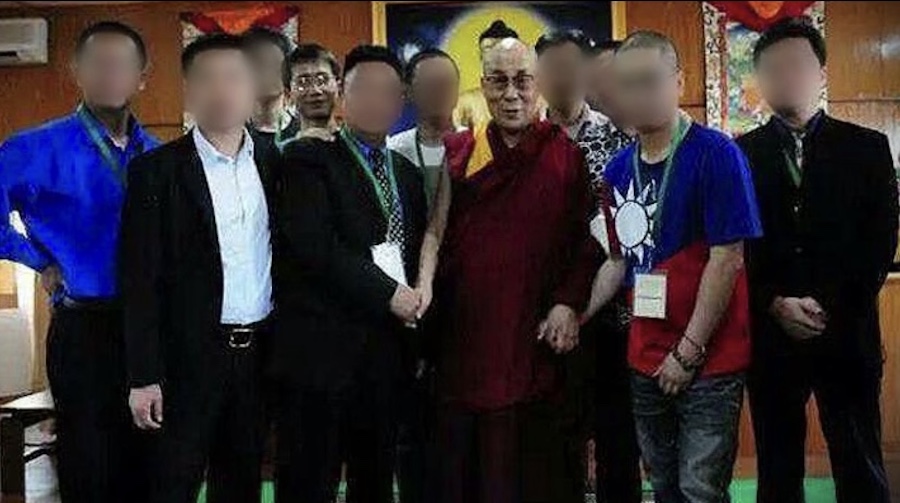By Pallavi Aiyar
BEIJING – India and China on Monday began an eighth round of talks on their long-standing border dispute, with the focus this time on devising a framework for a settlement of the issue on the basis of the “political parameters and guiding principles” finalized during Chinese Premier Wen Jiabao’s visit to India last year.
The demarcation of the border can only begin after the framework is realized, official sources say.
Indian National Security Adviser M K Narayanan and Chinese Vice Foreign Minister Dai Binguo met in Beijing for the first day of talks, which were expected to conclude on Tuesday, in what is seen as another step forward on the slow road to resolution.
After the last round of talks between Narayanan and Dai, held in March in India, the former said he was hopeful of arriving at a basic framework for resolution “within the next two to three rounds”.
As in the case of the preceding seven rounds, this week’s talks were being held behind closed doors and details of what was discussed were not being made public.
The discussions come amid a background of steadily warming relations. In the past year the two neighbors have entered into broad cooperation in areas where they have usually been portrayed as rivals: energy, security and defense. Trade is galloping ahead and expected to touch US$20 billion before the end of this year. China is widely expected to overtake the United States as India’s largest trade partner within a few years.
Cultural ties are also being strengthened after a 40-year deep freeze. India and China are currently celebrating a “Year of Friendship” and Chinese President Hu Jintao is expected to visit New Delhi later in the year.
The unresolved border issue, however, remains a sharp thorn in this otherwise rosy picture. Despite hope for a quick solution expressed by both sides, there is little evidence that such a solution is close.
The current set of talks began in 2003 after then Indian prime minister Atal Bihari Vajpayee’s visit to China, when it was decided to “explore from a political perspective” the overall “framework of a boundary settlement”. However, even before the decision to give a political touch to the negotiations, eight rounds of border talks had already been held between 1981 and 1987 as well as an additional 14 joint working-group meetings between 1988 and 2003.
Despite all these discussions at varying levels over the past 25 years, little innovative thinking on the boundary is in evidence. The two sides have not even been able to agree on the line of actual control or the verification of alignments of respective areas on mountaintops and in rivers and lakes.
China’s traditional position has been to resolve the dispute on the basis of a territorial “swap”, exchanging Aksai Chin in the west with Arunachal Pradesh in the east. This solution has been talked about ever since the 1950s, even before the 1962 war, and was reiterated by the late Chinese leader Deng Xiaoping in 1980.
India, however, has ruled out any “populated areas” as part of a border deal, which makes concessions in Arunachal Pradesh unacceptable. The area of Tawang is a particular sticking point since the Chinese claim it to be central to Tibetan Buddhism given that the sixth Dalai Lama was born there.
The entrenched positions of the two sides thus make the idea of a “swap” enormously complicated either to agree on or execute. However, few fresh ideas on resolving the issue seem to have evolved.
The Chinese mainland borders 14 countries. China has had boundary disputes with all of them. However, following an active policy that puts pragmatism ahead of ideology, Beijing has managed to settle all but two of its land-border disputes to its considerable advantage. In 2004, for example, Russia and China made a final and comprehensive settlement of their border dispute. Since then strategic and economic ties between the neighbors have greatly strengthened.
For the past several years China has been focusing on the development of its economically backward interior regions, including Tibet and Xinjiang. Massive infrastructure projects are being carried out, including a railway line from Golmud in Qinghai province to Lhasa, the capital of Tibet. It is in this context that Beijing is looking to settle the boundary issue with India as well.
On July 6, the historic Nathu La Pass between Sikkim and Tibet will be reopened for trade (see India, China reach new trade heights, June 22). The 4,545-meter-high pass is only some 500 kilometers from Lhasa and Kolkata. Currently, China-India trade is mostly by sea. Indo-Tibetan imports and exports are usually routed through Tianjin – a port city north of Beijing – involving a detour of thousands of kilometers. The reopening of the trade route through Nathu La thus has significant potential for invigorating the economies of both northeastern India and western China by linking Tibet to Kolkata port.
However, given the continued boundary problem, trade will be limited to the border region, and only a list of 40 items largely unchanged from the days of the Silk Road has been approved for import and export. (The original Silk Road was an ancient trade route between China and the Mediterranean Sea extending some 6,400km and linking China with the Roman Empire.)
Without a settled boundary it is understandable that the military establishments of both sides are reluctant to move too fast, too soon. Opening borders to full-blown trade would have a concomitant effect in increasing the ease of intelligence gathering and military maneuvers.
In the new millennium the border problem has ceased to have the kind of centrality to Sino-Indian bilateral ties it once had. Both sides are focusing on developing healthy economic, cultural and even military ties, even as talks on the boundary continue only to result in more talks. Nonetheless, resolving the border issue remains key to developing a truly strategic partnership across the Himalayas. No number of memoranda of understanding can fully chase out the ghost of the 1962 Indo-China War until there is clarity on the boundary.









